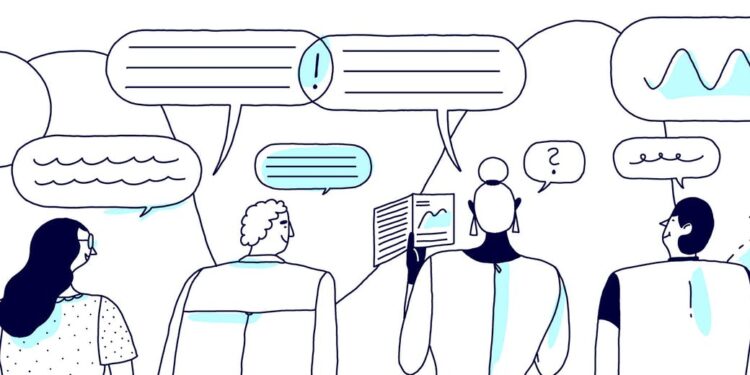In every industry, the customer is king and is always right. So, customers’ expectations of exemplary customer service continue to rise, and the businesses that prioritize superior service keep growing. Good customer experiences lead to more return customers, new customers through word-of-mouth, brand loyalty, and increased profits.
To develop a working strategy, you need to know your customers’ expectations, preferred interaction channels, and attitudes towards your customer service. Here are a few vital customer service statistics to help you serve your customers better now and in the future.
1. Statistics on the value of exemplary customer service
Microsoft: 96% of consumers across the globe consider customer service an essential factor when choosing brand loyalty.
Bain & Company: A 5% increase in customer retention produces a 25% increase in profits.
Gartner: 64% of consumers consider customer experience an important factor than price when making a buying decision.
Salesforce Research: 78% of consumers will buy again from a company with excellent customer service even after a mistake.
Dimensional Research: 52% of consumers claim to have made an extra purchase from a company after a positive customer experience.
American Express: Americans will pay an extra 17% to purchase from companies with excellent customer service reputations.
2. Statistics on the effect of poor customer service
Vision Critical: 42% of American consumers will stop doing business with a company after two bad customer service experiences.
Zendesk: 54% of consumers shared their negative experiences with over five people.
American Express: 33% of consumers would consider changing brands after one bad customer experience.
Esteban Kolsky: One out of 26 customers will inform a business about their poor customer service experience, while the other 25 would leave without complaining or explaining.
New Voice Media: The number one reason consumers switch brands is that they feel unappreciated.
3. Statistics on the state of customer service
Harris interactive: 89% of consumers have purchased from competitors after a bad customer experience.
American Express: 81% of Americans feel that companies meet and others exceed their customer service expectations.
Microsoft: 67% of consumers worldwide feel that customer service training is improving.
Harvard Business Review: 80% of firms analyze customer experiences through customer satisfaction scores and use this customer data to improve their services.
4. Statistics on customer service expectations
Statista: 33% of consumers expect the most important element of exemplary customer service to be a single interaction problem resolution, no matter how long it takes.
Salesforce: 59% of consumers feel firms should offer outstanding customer-centric digital experiences.
Accenture: 48% of consumers expect brands to offer them special treatment for customer loyalty.
Microsoft: 52% of consumers worldwide believe that brands should take action on customer feedback.
American Express: 68% of consumers believe a polite customer service representative is the key to stellar customer service.
Bain & Company: Consumers are four times more likely to turn to competitor brands when their problem is service-based.
Dimensional research: Having to explain their problem to more than one person is poor customer service, according to 72% of consumers.
5. Statistics on customer service communication channels
Salesforce: 64% of customer service teams use customer portals, while 84% of customers use the portals.
Salesforce: 66% of customer service agents compared to 82% of consumers use knowledge bases like online FAQs.
Forrester: 63% of online customers will most likely return to a website with a live chat.
Comm100: Millennials prefer live chat from customer service teams over any other communication channel.
Salesforce: 75% of consumers want a consistent customer experience regardless of the communication channel they use.
Salesforce: 81% of consumers use online chat to communicate with a company, yet only 52% of companies use live chat.
6. Statistics on the importance of customer service personalization
Salesforce Research: 63% of consumers expect companies to know their customers’ needs and expectations.
Trust Pilot: a company’s online conversion rate can increase by about 8% when it includes personalized customer service interactions.
Salesforce: 79% of consumers would share their personal, relevant information for personalized engagement where they are instantly identified and understood.
7. Statistics on the importance of speed and short wait times
Zendesk: 64% of consumers expect real-time support regardless of the customer service channels they use.
Zendesk: about 70% of consumers are irritated when companies transfer their calls between departments or agents.
HubSpot Research: 33% of consumers get irritated when they have to wait on hold.
Statista: 12% of American consumers consider a lack of speed their number one service frustration.
Forrester: 66% of US consumers believe the best way companies can provide better customer experiences is to value their customers’ time.
McKinsey: 75% of online customers expect help in less than five minutes.
Plum Voice: 33% of consumers are unwilling to wait on hold. 27.6% say they would wait for one minute, and 4.1% say they would wait for as long as it took.
Conclusion
If you make good customer service your top priority, you will experience an increase in loyal customers and profits. Consider training your customer service teams on the best practices for dealing with all types of consumers to provide great customer service.
You can incorporate digital signage in your premises to highlight some important customer statistics to remind your customer service agents of the value of good customer service.
Consider these customer service stats to improve your customer service consistently to provide good customer service experiences for every customer engagement, whether physical or online.











